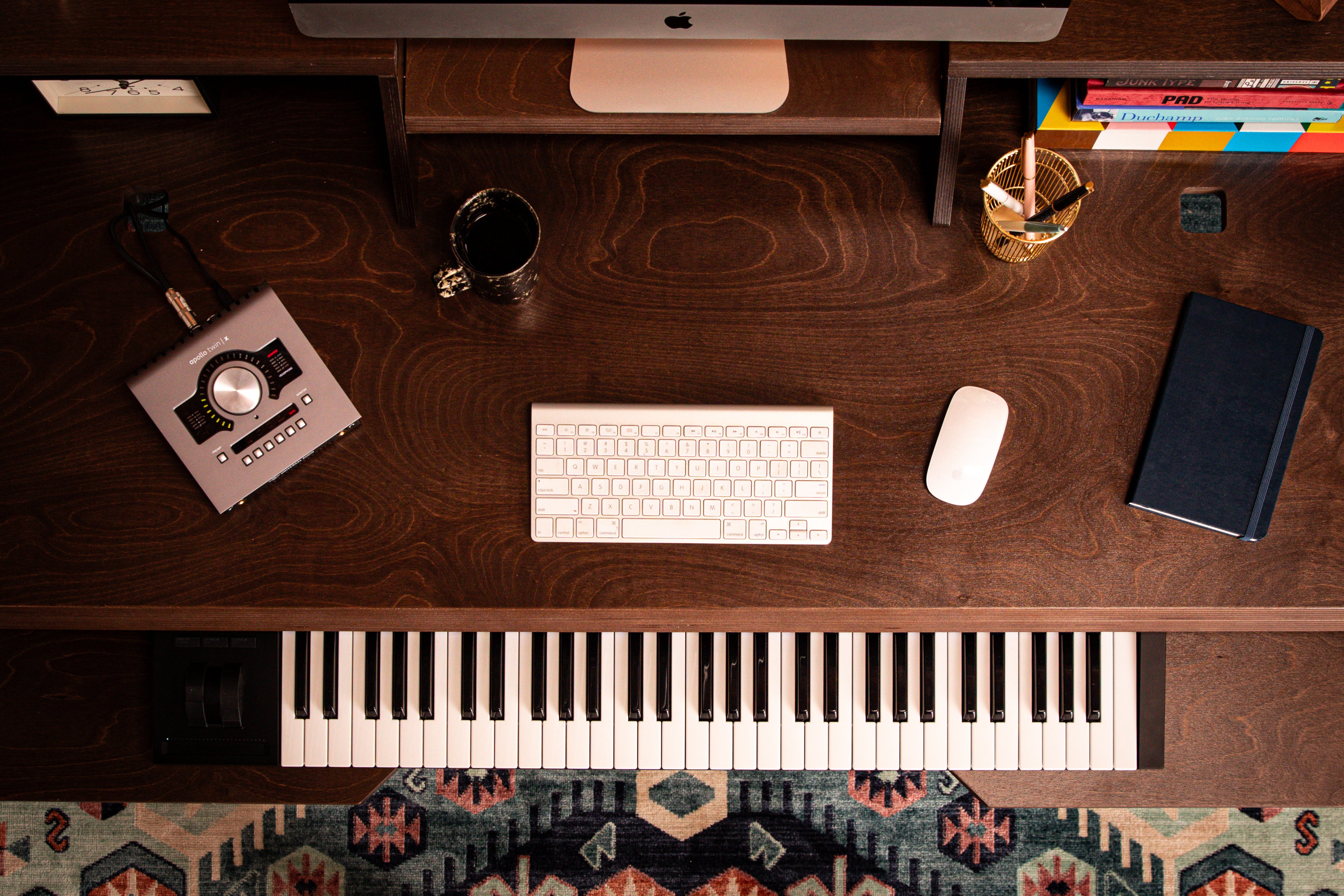Reflections
It’s pretty obvious why movie theaters aren’t in halls of mirrors, the reflections of light and image everywhere would be overwhelming, and it would be impossible to focus on the intent of the filmmakers, yet, that’s basically what we do with our mixing and listening environments. We mix and listen to music in cubes made of reflective materials. Reflections distort how we perceive a mix, and create all kinds of unpleasant sounding echoes and reverbs.
One of the biggest culprits in distorting our perception of the soundstage, the virtual stage we create when we mix, is early reflections. Early reflections are simply that, reflections that arrive to us early. These are the first reflections off of the hard surfaces near us, like our desk, ceiling and side walls. In small rooms they arrive at our ears so quickly after sound from the source, that we perceive it arriving at the same time, so they’re effectively a form of distortion. The same thing happens if you’re recording in a live room that hasn’t been sorted.
Early reflections are not inherently bad. Most concert halls are designed to focus early reflections on the audience, and most of what you hear in a non amplified acoustic concert hall is reflections. However, in a mix, you’re trying to deliver a concert hall of your making, or soundstage, to the listener, so you really don’t want your room adding anything to it that will not translate to another room. Just like you don’t want room modes enhancing frequencies that aren’t there in the mix (we’ll get into that in another article), you don’t want reflections completely distorting your soundstage.
While recording, unless you are recording in a room that you want to make part of the recording, you probably want the dryest recording you can get, to place in your virtual soundstage. If you’re recording all of the noise your room is creating as well, it’s going to be very difficult to place that instrument or voice where you want it in the mix, or add pleasing effects.
In addition, parallel reflecting surfaces can create very unnatural sounding echoes and reverberations, which makes sense, because nothing in nature is a box. One of the biggest culprits here is flutter echo, which is a kind of springy sounding reverb tail that oscillates at the end of a hard reverberation. It’s that weird pinging sound that happens if you go into a large bathroom and clap. You don’t want to mix in a room that does this, and really don’t want to record it. You also don’t want to mix in something that sounds hollow, or record it.
Due to the physics of sound and the wavelengths of lower frequencies, it’s not practical to simply absorb all sound waves and turn a home studio into an anechoic chamber. Plus, a little bit of liveliness in a room can be a good thing--if it’s predictable. A natural diminishing reverb tail sounds nice, an echo ending with a flutter does not. Also, not only are frequencies not created equally in how we perceive their direction and loudness, but also in musical composition as well as sound design. Because of that, there are different tools at our disposal to deal with different frequencies that are tailored to how we want to affect them, whether bouncing them in a different direction, trying to reduce or eliminate reflections, or trying to reduce their energy entirely. The tool that we’ll focus on that help us with reflections in this article are Aborbers.
Absorbers
Absorbers absorb. They absorb energy that hits them from the front, and in the case of De-Fi Absorbers, also catch energy from behind, because the De-Fi Absorbers are a complete system that creates an air gap between the absorbing Eco Panels and the wall or ceiling behind, utilizing both sides. This also causes them to act like mini diffusers, because they’re introducing different dimensional surfaces to the room, which is helpful in knocking down modes in smaller rooms with higher resonant frequencies (higher frequency wavelengths are shorter).
However, they don’t absorb everything. They mostly absorb mid to high frequencies, but that’s still very helpful, because higher frequencies are more directional. These are going to be your major ally in taming early reflections, flutter echo and the general hollow sounding nature of the boxes that become our studios. These will clean up your sound stage, and focus the airiness of your recordings. These are the ones catching the smaller balls being fired from the racquetball cannon.
It’s fairly easy to figure out where to put them. Remember, the goal is to hear your studio monitors, and not early reflections from the walls flanking them, or the ceiling above. Just by living life and maybe playing some four square in elementary school or shooting pool, you probably intuitively know where these should go, but to confirm, an easy trick to figure out exactly where to put them, is to get a mirror and put it where you think sound will reflect to your listening position. If you sit in your mixing position, and see your monitors in the mirror, that’s where an absorber should go. Once you have those problem early reflective areas taken care of, you can proceed with outfitting the rest of your studio. In general, you don’t want any two parallel surfaces being able to interact with each other unencumbered. If you do this, you’ll also take care of the flutter echo and that hollow sound that many of our rooms have.


